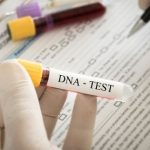DNA paternity testing of related potential fathers is fairly common, although in these types of paternity cases it is more difficult to prove paternity beyond any shadow of a doubt. It is always best to included both potential father in this type of test.
While positive DNA tests can be accepted as positive evidence of paternity in the most cases due the statistical improbability of potential fathers having the same DNA profiles, if the possible fathers are related they are more likely to have similar DNA profiles. It isn’t uncommon for brothers to be involved in a parentage dispute, or even for the mother to have a DNA test carried out privately to determine which is the father of her child.
The Legal Aspects
Where DNA paternity testing is to be used in evidence, courts will generally insist on a legal paternity test where the collection of the sampling is carried out by an authorized professional and the identity of the subject legally determined though an ID check and photo documentation. Home DNA testing, or DNA tests on samples presented by the subject, are not admissible as evidence. The probability of paternity accepted as definitive proof varies from state to state, although most states require a probability of 99%.
Such probability is determined largely by the DNA, and the manner the test is preformed. A good DNA test looks at 16 genetic markers, it would run all tests twice independent of each other, and should guarantee resutls of 99.9+%. It also depends on whether the sample of the Mother is included in the testing or not, as this will help to obtain a much higher level of probability.
Common DNA between Family Members
DNA tests on related potential fathers are no different from those carried out on any other subject: it is the results that could potentially create problems. Take the case of first cousins: they share 12.5% of their DNA and so it will be more difficult to prove parentage. This sharing of DNA increases to 25% for uncles, nephews and half-brothers, and to 50% for sons, fathers and brothers of the person being tested.
DNA paternity testing on different members of the same family is not an uncommon situation, and can occur for a number of reasons, including:
a) Pregnancies arising from consensual and non-consensual relationships with related men.
b) Two family members each claiming parentage, whether or not the mother is claiming one or neither to be the father.
c) A brother desiring confirmation that he is the parent.
d) The mother, or potential mother, having a private test to assure herself as to who is the father.
e) A grown child confirming parentage, particularly where an inheritance could be involved.
There are others, but these are common reasons for legal and home DNA tests being carried out where potential fathers are related. Standard DNA paternity testing statistics are based upon unrelated members of the public, and unless the laboratory carrying out the DNA testing has been informed of the relationship, the test results could be misinterpreted. Most reputable DNA testing companies will recommend that you preform a paternity test with each of the potential fathers to verify which would be a closer match to the child.
The Case of Identical Twins
Nevertheless, it is possible to test additional DNA markers if any of the above relationships are known, but not in one specific case. This is the case of identical twins. Fraternal twins occur when two eggs are fertilized by two sperm, and are no more alike genetically than were they siblings born years apart. Identical twins, however, are formed when one egg is fertilized by one sperm and then splits into two halves within the first 14 days for no known reason.
These twins share an identical DNA their DNA profiles would be indistinguishable from one another. There is no test that can determine which is the biological father of a child. Unless one is excluded for some reason, either could be the father and that is all that DNA testing can prove. The court would have to disregard DNA results and use other means to determine paternity.
Old-fashioned policing, therefore, still has a part to play where the related potential fathers are identical twins. Apart from this specific case, DNA paternity tests are not entirely foolproof since they rely on probability, but are virtually conclusive where you simply want confirmation of paternity. In such a case, a likelihood of 1 in a 1000 is a virtual certainty and where confirmation is required between a limited number of candidates, a 99.9% DNA genetic testing result is legal confirmation.




